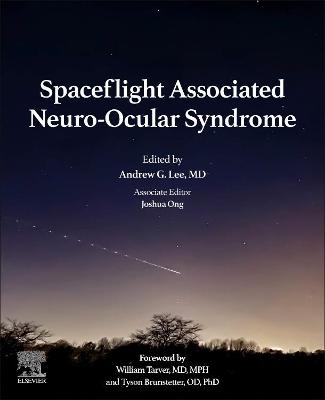
Spaceflight Associated Neuro-Ocular Syndrome
Academic Press Inc (Verlag)
978-0-323-91524-3 (ISBN)
Dr. Lee received his first faculty appointment in 1994 as an Instructor in the Department of Ophthalmology, Neurology, and Neurosurgery at the Baylor College of Medicine in Houston, Texas. He became an Associate Professor there in 1998 and a member of the key clinical faculty in the following year. In 2000, Dr. Lee joined the faculty at the University of Iowa in Iowa City, IA as an Associate Professor and later a full Professor in the Department of Ophthalmology, Neurology, and Neurosurgery. He serves on the editorial boards of 12 journals including the American Journal of Ophthalmology, Canadian Journal of Ophthalmology, and Eye and is the Editor in Chief of the Journal of Academic Ophthalmology. Dr. Lee is a recipient of the Honor Award, Secretariat Award, and Senior Achievement Award from the American Academy of Ophthalmology. Resident training is a particular interest of Dr. Lee. He has published several papers on teaching and competency testing methods in ophthalmology residency programs. Dr. Lee joined Houston Methodist Hospital and Research Institute in 2009 and is currently Chair of the Blanton Eye Institute at Houston Methodist Hospital and Professor of Ophthalmology, Neurology, and Neurosurgery at the Weill Cornell Medical College. Joshua Ong, MD is a resident physician with a passion for protecting astronaut health. He has conducted research on several space medicine research projects, including a project that launched into space. He has presented at the National Aeronautics and Space Administration (NASA) Human Research Program Investigators' Workshop and strives to continue his lifelong journey in ophthalmology and space medicine.
1. An introduction to space medicine and the physiological effects of spaceflight on the human body 2. Neuro-ocular findings and mechanisms in Spaceflight Associated Neuro-Ocular Syndrome 3. Optical coherence tomography and Spaceflight Associated Neuro-Ocular Syndrome 4. Clinical neuroimaging of Spaceflight Associated Neuro-Ocular Syndrome 5. Genetics, vitamins, and Spaceflight Associated Neuro-Ocular Syndrome 6. Glymphatic system and Spaceflight Associated Neuro-Ocular Syndrome 7. Mechanical alterations of the brain and optic chiasm in Spaceflight Associated Neuro-Ocular Syndrome 8. Intraocular pressure and Spaceflight Associated Neuro-Ocular Syndrome 9. Intraocular and intracranial pressure relationships for Spaceflight Associated Neuro-Ocular Syndrome countermeasures 10. Pathophysiology of cerebral edema and its connection to Spaceflight Associated Neuro-Ocular Syndrome 11. Cerebral hemodynamic changes and invasive/noninvasive monitoring for Spaceflight Associated Neuro-Ocular Syndrome 12. Terrestrial analogs for Spaceflight Associated Neuro-Ocular Syndrome 13. Potential countermeasures for Spaceflight Associated Neuro-Ocular 14. Space-induced neuroocular syndrome in astronautsdthe ICP hypothesis 15. Multimodal assessment of visual function and ocular structure for monitoring Spaceflight Associated Neuro-Ocular Syndrome
| Erscheinungsdatum | 29.07.2022 |
|---|---|
| Verlagsort | Oxford |
| Sprache | englisch |
| Maße | 191 x 235 mm |
| Gewicht | 500 g |
| Themenwelt | Medizin / Pharmazie ► Medizinische Fachgebiete ► Augenheilkunde |
| Medizin / Pharmazie ► Medizinische Fachgebiete ► Neurologie | |
| ISBN-10 | 0-323-91524-8 / 0323915248 |
| ISBN-13 | 978-0-323-91524-3 / 9780323915243 |
| Zustand | Neuware |
| Haben Sie eine Frage zum Produkt? |
aus dem Bereich


